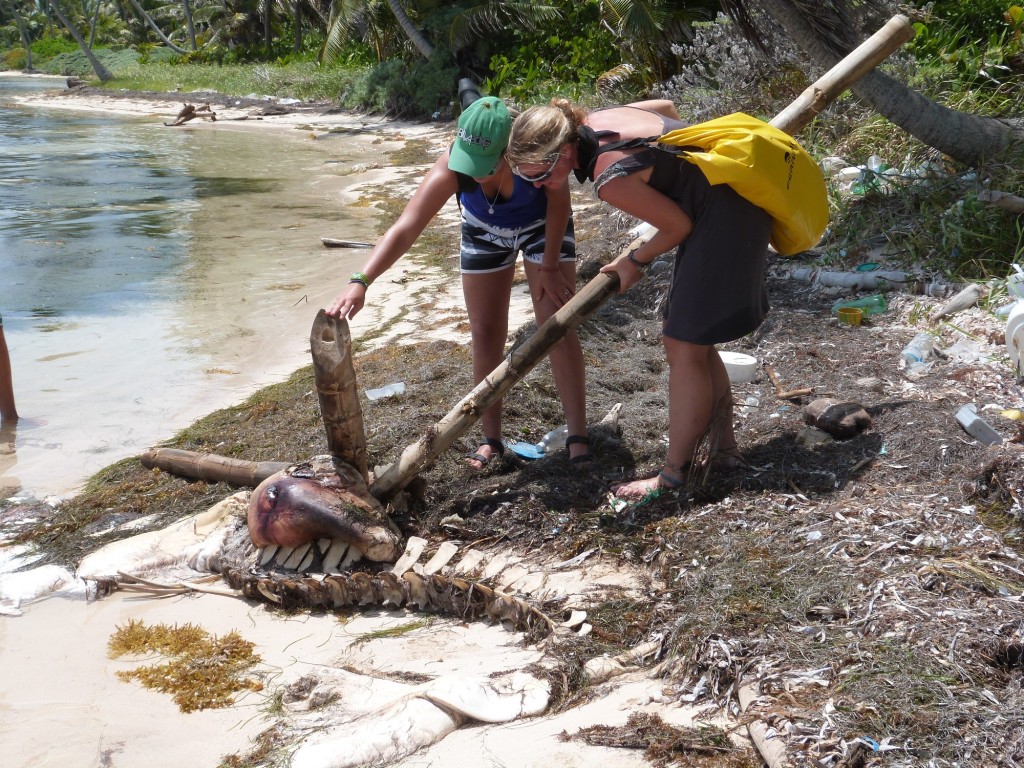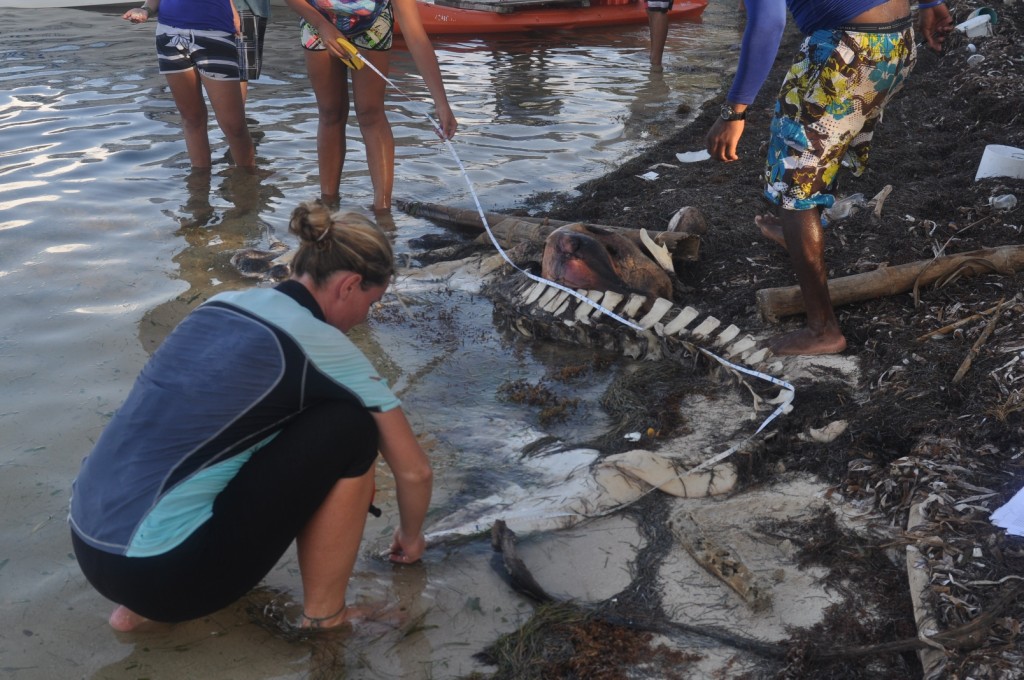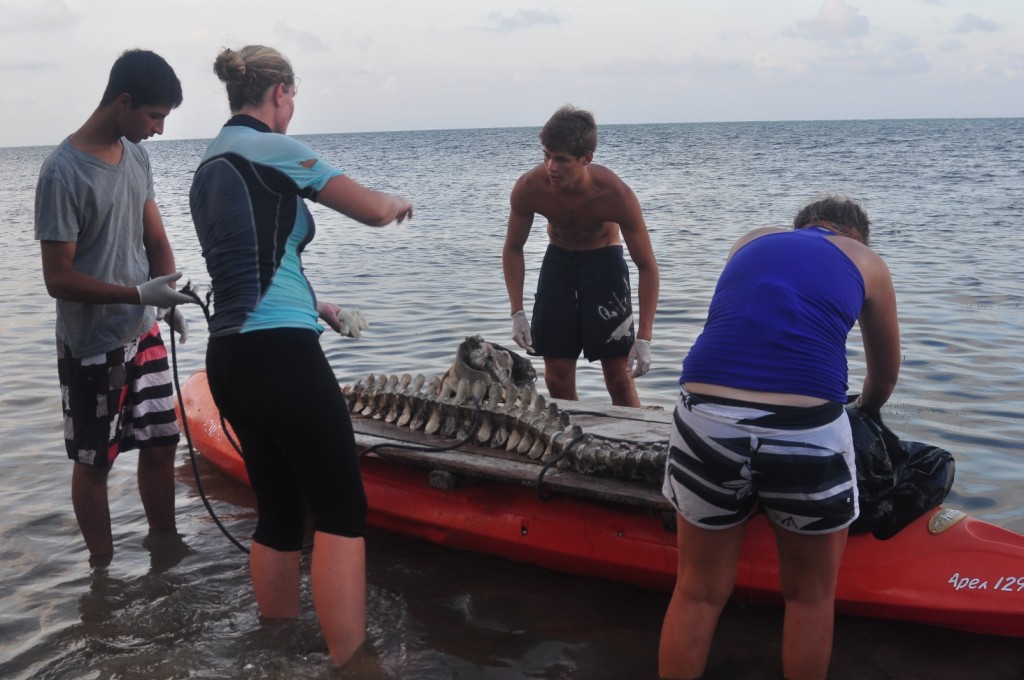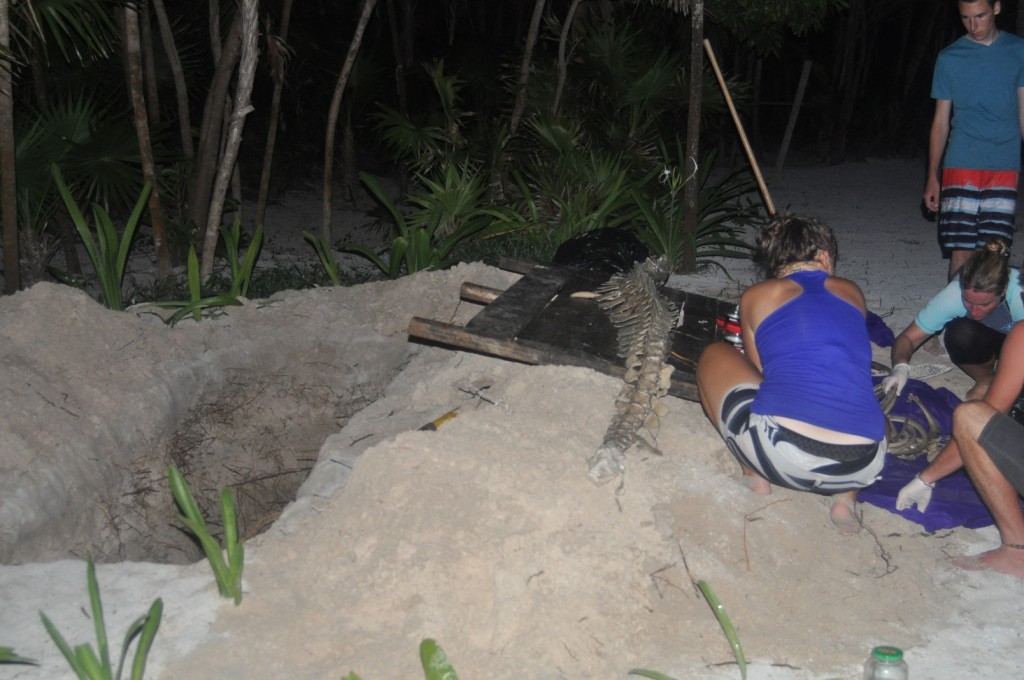By Gizem Poffyn, BV volunteer, Belize
Day 1:
Yesterday night the stars were beautiful; shining bright in a clear black sky. The sea was calm and the stingrays came very close to the beach to try and catch the crabs.
This morning was different.
The weather is bad, no diving today. Should I go to San Pedro, maybe? But it’s one of our last days at BCDC and I want to enjoy my time at the camp as much as possible.
Together with the other volunteers, we decide to make it a walk-and-snorkel-to-Rocky-Point-day. Great!
Fresh water? Check. Fins and mask? Check. Booties? Check. Sun cream? Check. Off we go!
Only 20 minutes later we discovered something quite disgusting but very fascinating. It’s a huge smelly carcass, about four meters long.
What could it be? The scientists and biologists among us are very interested. At first we thought it might have been a manatee but then we spotted a blowhole – it must be a whale!

Discovering the carcass
After some poking with a stick and turning the head over (and gagging while seeing the maggots – at first I thought they were sand) we continued our walk.
At Rocky Point we snorkelled, saw some 2 meter long reef sharks, a 1.5 meter long tarpon… Rocky point is pretty impressive. On the walk back we saw a Caribbean round stingray and a dead pufferfish.
Today was a good sighting day.
Day 2:
Tomorrow is our last day at BCDC and I‘m going to miss this amazing place.
But today was a wonderful penultimate day; I got to do 2 fun dives!
The first one was at Firing Range, where we saw a green moray eel and some huge groupers!
The second one was at Chub Hole. We weren’t even on the bottom yet when we saw about 10 cubera snappers casually swimming around. Some angelfish, permit and barracuda joined them. Fantastic. We saw another green moray eel and then a very pretty nudibrach!
Oh, and a black durgon that I saw die…
Talking about dead things… the whale carcass we found yesterday was a very important discovery! (Scientists in Mexico, Florida and Belize are now very excited over it…) BV had to go back with a couple of volunteers (I was one of them) to move the body to our camp and bury it. A month later they’ll dig it up, so that the Belize Marine Mammal Working Group members can study the clean bones, and hopefully identify the species.

Measuring the size of the carcass
So we took some kayaks on the Colombian, took rubber gloves, some jars with alcohol to put some samples in, some plastic bags and a sharp knife.
Once we arrived at the place, we started ‘Operation Whale’. With gloves on our hands, we started collecting all the bones. After searching the sea grass for ribs and finger bones, we also found some teeth. It could be a pilot or a sperm whale, an exciting mystery.
Then we put the spine on the kayak. Now the head… Oh that smell, indescribable! Maggots everywhere – this is the most disgusting but best thing I’ve ever done.
Finally we got the head on the kayak. We tied it all together with some rope and slowly started driving back. Very slowly, trying to keep the kayak as steady as possible.

Putting the skeleton on the kayak
There’s something special about a whale carcass on a kayak, being towed by a boat that’s slowly moving while the sun sets – with the silhouettes of palm trees against a pink and orange sky… Setting the perfect Caribbean summer scene…(?)
Everyone was curious when we arrived at BCDC. The brave ones helped to remove the carcass from the kayak to its new, temporary, grave. By that time we needed head torches and a second or third pair of gloves.
We wrapped the bones in old sandfly nets because we didn’t want any of them to get lost in the sand. And then it was burying time. Carefully we put the whale carcass in the pit, filled the hole and marked the place with some sticks.

Burying the carcass
That was it. No more whale until next month. I was tired yet satisfied.
The next day I washed my whale clothes. The smell stayed but so did the fantastic memories.

